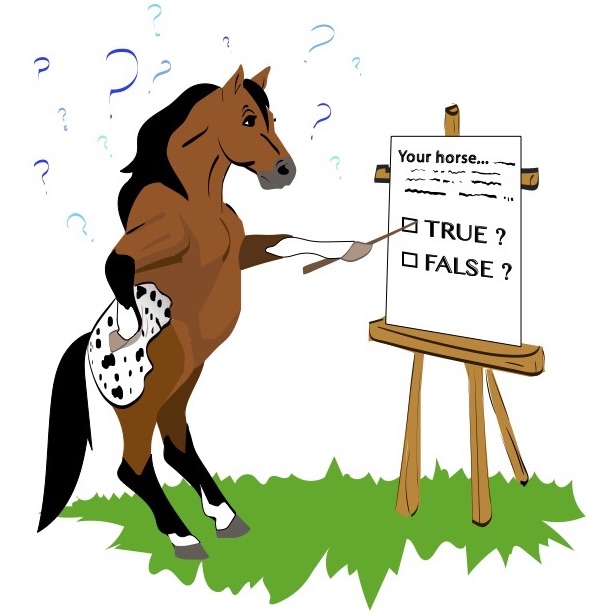
1. True or false: An enterolith is a mineral mass that forms in a horse’s esophagus.
T / F
2. In the U.S., equine enterolith cases are most common in…
A) Nevada, Idaho, Utah, Colorado, and especially Nebraska.
B) Florida, Ohio, Indiana, Texas, and especially California.
C) Oregon, Minnesota, Michigan, and especially Maine.
3. True or false: When ingested by your horse, any of the following can serve as the starting point (nidus) of an enterolith: pebbles/small rocks, grains of sand, hair, baling twine, shavings, and bits of metal, plastic, wood, or cloth.
T / F
4. Which breeds are thought to be at higher risk of developing enteroliths?
A) Arabians, Morgans, American Miniatures
B) Thoroughbreds, Standardbreds
C) Mustangs, warmbloods, all pony breeds
HOW’D YOU DO? (Answers below.)
1. F is correct. Enteroliths are stone-like mineral masses that form in a horse’s colon. Also known as intestinal stones or calculi, they can grow to the size of cantaloupes, causing obstruction and colic. The condition is confirmed by X-ray; surgical removal is usually the treatment. If stones are identified before the intestine ruptures, the success rate of surgery is high, especially compared with all other forms of colic surgery.
2. B is correct. Enteroliths are the most common form of surgical colic at the University of California, Davis. The prevalence in some regions of the country may have to do with local soils creating hays high in the ingredients needed to form a stone and promote a more alkaline (higher pH) environment in the colon. Diets consisting of more than 50% alfalfa have been linked to the formation of enteroliths.
3. T is correct. Many different kinds of foreign matter can serve as the starting point for an intestinal stone. A horse may have one or more stones ranging in diameter from pea-sized to cantaloupe-sized. Sometimes the smaller stones are passed and found by observant owners. If you find what look like petrified fecal balls in your horse’s pasture, have him checked for enteroliths.
4. A is correct. Enteroliths can form in a horse of any breed, but Arabians, Morgans, and American Miniatures seem to be especially vulnerable.
[LEARN MORE! Additional information on enteroliths.]
Hey! Not already receiving H&R’s fun and informative newsletter? Sign up right now for The Ride.






